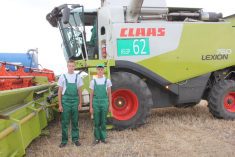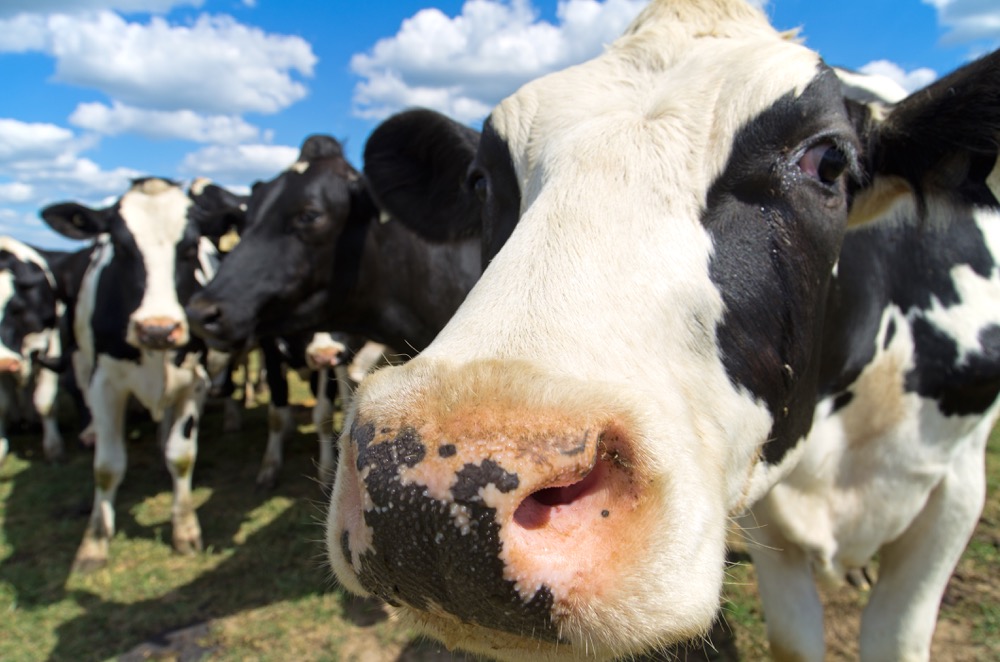I’ve seen and eaten some really amazing foods over the years. Cheese made from sow’s milk, rattlesnake, guinea pig, camel baked in cinnamon, insects and curious fish products.
All made for memorable experiences — some that were more pleasant than others.
I still cannot stomach camel or Vegemite, nor am I rushing out for grilled guinea pig, grubs or some of the herbs that taste like dirty old socks. But many of the other foods, were interesting and tasty.
The food, however, is not the story.
Read Also

Guarding against misinformation: Do you believe in house hippos?
Misinformation and disinformation run rampant in today’s digital age. Farmers must be wary of the digital dangers and know how to keep themselves safe.
The story is the farmer who dared to try to milk a pig or tan a fish. And it brings to light the innovation in the food production space. From farmers of the tiny fields of B.C. that bring us organic syrups made of roses and cardamom, to the wild fields of blueberries in Atlantic Canada which are made into everything from BBQ sauce to wine, through to the specialized pasta made from propriety-grown grain on the massive Prairies; there is much to celebrate in agriculture.
It starts with being curious.
The farmer who wondered just what the possible was when drying grape skins into flour discovered a high-end baking product. The next person found that lavender is also tasty in wine and chocolate. The innovator who made dandelions into a smooth gin and roots into coffee has strong market interest while the next farmer found a way to channel their grain production into specialized breakfast cereal.
All these activities take a lot of daring and determination.
- More with Brenda Schoepp: A promise with no timeline is not a succession play
I am curious as to what is next and if there will be a new disruptive technology or food product in our near future. Today’s trends include upcycled foods that are not perfect, wasted or rejected which are then made into pastes and pulps, flours and other ingredients. Farms often use these rejects and turn them into livestock feed, fertilizer or biofuel. In all cases, what we do with what we have the most of, such as weeds, can lead the way to new and diverse foods or co-products.
As a girl I detested the amount of stinging nettle that we had to trudge through when bringing the milk cows in. The plant was tall and it hurt when it touched my skin. I had known that in the early pioneer days, the plant was boiled in the spring to boost the vitamin intake of children, but I was not appreciative of the value of nettle.
A few years ago I enjoyed lamb roasted over the course of several hours wrapped in stinging nettle and it was profoundly delicious. Today, I can point to several stinging nettle farms nearby that grow the plant for its high nutrient and protein content as well as painkilling anti-inflammatory properties. Stinging nettle tea is now always in my cupboard and as I drink this I wonder what more this plant has to offer.
As my curiosity took hold, I discovered stinging nettle is grown as a high-end micro-herb for restaurants and is a super pollinator, making nettle honey a strong possibility. Sure enough, I then discovered a farm 10 minutes away offering nettle honey and nettle syrup. The plant also has enough fibre to spin into fabric. The fabric, called ramie, is gorgeous!
Suddenly that old weed patch has great value. I am certain that a farmers’ innovative spirit was behind all these discoveries.
On a larger scale, there are tremendous success stories of how food was created from proprietary plants or plants bred specifically for manufacturing such as canola. The developed-in-Canada oilseed is now a highly sought ingredient that is used in a wide variety of foods and in cosmetics, as animal feed and in bioplastics. Not only has canola provided robust income on Canadian farms, it is a cornerstone export product.
So fellow farmers, what is next?
Is the newest discovery from an ancient plant such as barley? Or have we yet to create food for humans and animals that differ from what we see on our landscape today? The answers to our future in food are in the realm of both technology and the natural world. If spider silk, which is stronger than steel and made of protein, can be the frame of the next farm shop and your computer in the future is made of mushrooms and chicken feathers (both can be made into bioplastics) while hemp insulates your home, then certainly there is room to create more interesting food products.
Not that this is easy.
I remember talking to the young farmer who successfully milked a sow and then made that cheese which sells exclusively to high-end chefs. He smiled and with a twinkle in his eye and said, “It sure takes a long time to milk a pig.”
Value adding might not be your gig and maybe the most adventurous thing you try is pepper on your strawberries and salt on your watermelon (delicious). But there could be someone in your family who sees an opportunity on the farm and is aching to create a food or product that is unique, if not remarkable.
















